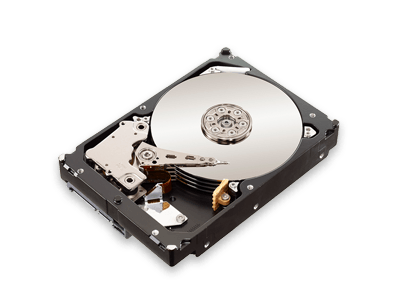History of bits and bytes in computer science
1. Bit
I start the story by talking about base-10 system. When you understand the base-10 system, our story will not be interrupted and confused.
Okay, the base-10 system is the most popular one but it's not unique. Many cultures used different systems in the past, however, today most of them have moved to base-10 system. The base-10 system uses 10 digits: 0, 1, 2, 3, 4, 5, 6, 7, 8, 9, which are put together to form another number.
If you only have one box, you can only write a number from 0 to 9. But ..
- If you have two boxes, you can write a number from 0 to 99.
- If you have three boxes, you can write a number from 0 to 999.
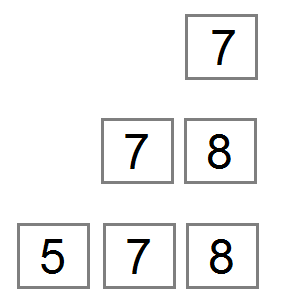
All boxes from right to left have a factor which is in turn 10^0, 10^1, 10^2, ...
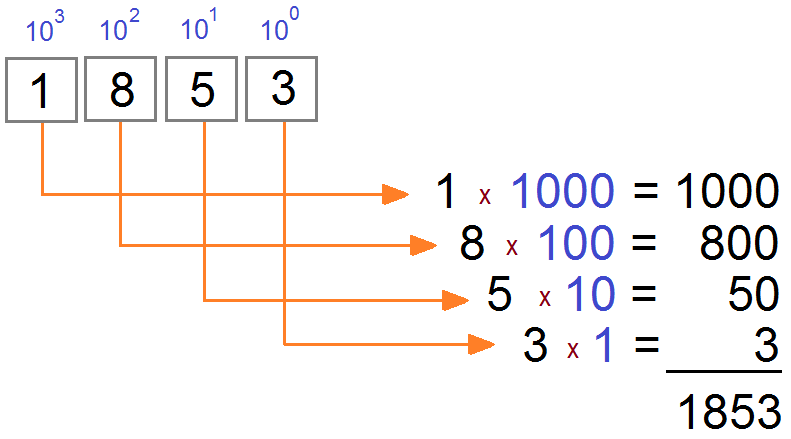
BIT
BIT is short for Binary digIT (information unit). A bit that denotes value 0 or 1, is called the smallest unit in the computer. 0, 1 are two basic digits of base-2 system.
Let infer as base-10 system and apply it to base-2 system. If you have one box, you can write 2 numbers such as 0 and 1. If you have 2 boxes, you can write 4 numbers such as 00, 01, 10, and 11 (Note: Do not be mistaken, these numbers are ones of base-2 system).
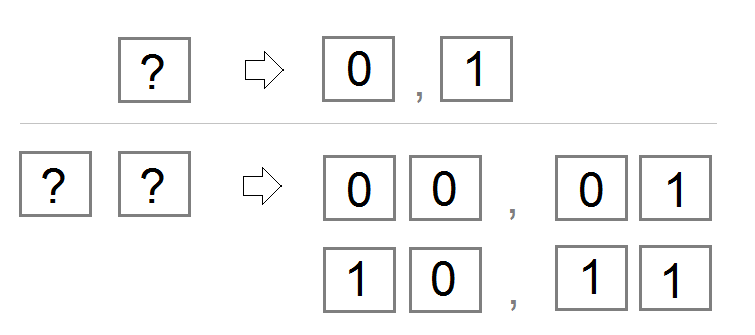
For base-2 system, the boxes from right to left have 1 factor. They are in turn 2^0, 2^1, 2^2, ...
The following image describes the way how to convert a number of base-2 system to base-10 system.
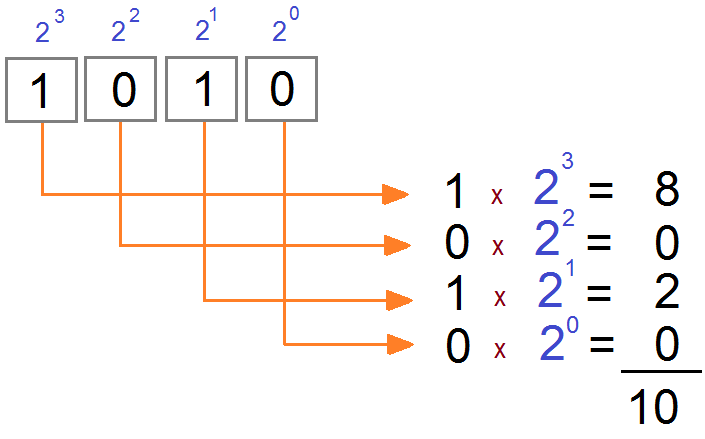
Thus:
- If you have two boxes in the base-2 system, you can write the largest number of 11 (base-2), which is equivalent to 3 in the base-10 system.
- If you have 3 boxes in base-2 system, you can write the largest number of 111 (base-2), which is equivalent to 7 in base -10 system.
Box Numbers | Maximum Number (Base-2) | Convert to Base-10 |
1 | 1 | 1 (2^1 - 1) |
2 | 11 | 3 (2^2 - 1) |
3 | 111 | 7 (2^3 - 1) |
4 | 1111 | 15 (2^4 - 1) |
5 | 11111 | 31 (2^5 - 1) |
6 | 111111 | 63 (2^6 - 1) |
7 | 1111111 | 127 (2^7 - 1) |
8 | 11111111 | 255 (2^8 - 1) |
9 | 111111111 | 511 (2^9 - 1) |
Why does the computer use base-2 system but not base-10 system?
You surely ask the question "Why does computer use base-2 system but not base-10 system?". I have asked this question before, like you.
Computers operate by using millions of electronic switches (transistors), each of which is either on or off (similar to a light switch, but much smaller). The state of the switch (either on or off) can represent binary information, such as yes or no, true or false, 1 or 0. The basic unit of information in a computer is thus the binary digit (BIT). Although computers can represent an incredible variety of information, every representation must finally be reduced to on and off states of a transistor.
Thus, the answer is that computer does not have many states to store information, therefore, it stores information based on the two states of ON and OFF (1 and 0 respectively).
Your computer hard drive also stores data on the principle of 0, 1. It includes recorders and readers. It has one or more disks, which are coated with a magnetic layer of nickel. Magnetic particles can have south-north direction or north-south direction, which are two states of magnetic particle, and it corresponds to 0 and 1.The reader of hard drive can realize the direction of each magnetic particle to convert it into 0 or 1 signals.The data to be stored on hard drive is a line of 0 or 1 signals. The recorder of hard drive relies on this signal and changes the direction of each magnetic particle accordingly. This is the principle of data storage of hard drive.
2. Byte
Byte is an unit in computer which is equivalent to 8 bits. Thus, a byte can represent a number in range of0 to 255.
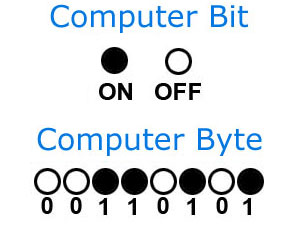
Why is 1 byte equal to 8 bit?
Your question is now "Why is 1 byte equal to 8 bits but not 10 bits?".
At the beginning of computer age people have used baudot as a basic unit, which is equivalent to 5 bits, i.e. it can represent numbers from 0 to 31. If each number represents a character, 32 is enough to use for the uppercase letters such as A, B, ... Z, and a few more characters. It is not enough for all lowercase characters.
Immediately after, some computers use 6 bits to represent characters and can represent at maximum 64 characters. They are enough to use for A, B, .. Z, a, b.. Z, 0, 1, 2, .. 9 but not enough for other characters such as +,-,*, / and spaces.Thus, 6 bits quickly become to be restricted.
ASCII defined a 7-bit character set. That was "good enough" for a lot of uses for a long time, and has formed the basis of most newer character sets as well (ISO 646, ISO 8859, Unicode, ISO 10646, etc.)
ASCII sets:
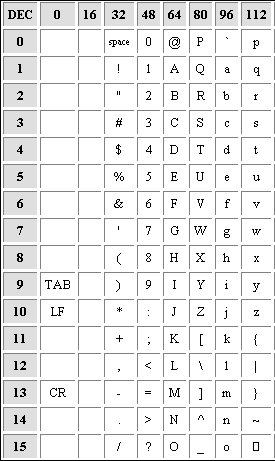
8-bit, a little bit more than 7-bit which is better. It doesn't cause too large waste. The 8-bit is a collection of numbers between 0 and 255 and it satisfies computer designers. The concept of byte was born, 1 byte = 8 bits.
For 8-bit, Designers can define other characters, including special characters in computer. ANSI code table was born which is inheritance of the ASCII code table:
ANSI Sets:
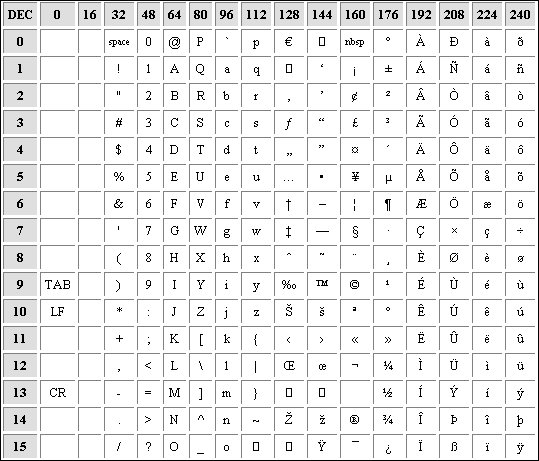
There are many character sets with a view to encoding characters in different languages. For example, Chinese, Japanese require a lot of characters, in which case people uses 2 bytes or 4 bytes to define a character.
Java Basic
- Customize java compiler processing your Annotation (Annotation Processing Tool)
- Java Programming for team using Eclipse and SVN
- Java WeakReference Tutorial with Examples
- Java PhantomReference Tutorial with Examples
- Java Compression and Decompression Tutorial with Examples
- Configuring Eclipse to use the JDK instead of JRE
- Java String.format() and printf() methods
- Syntax and new features in Java 8
- Java Regular Expressions Tutorial with Examples
- Java Multithreading Programming Tutorial with Examples
- JDBC Driver Libraries for different types of database in Java
- Java JDBC Tutorial with Examples
- Get the values of the columns automatically increment when Insert a record using JDBC
- Java Stream Tutorial with Examples
- Java Functional Interface Tutorial with Examples
- Introduction to the Raspberry Pi
- Java Predicate Tutorial with Examples
- Abstract class and Interface in Java
- Access modifiers in Java
- Java Enums Tutorial with Examples
- Java Annotations Tutorial with Examples
- Comparing and Sorting in Java
- Java String, StringBuffer and StringBuilder Tutorial with Examples
- Java Exception Handling Tutorial with Examples
- Java Generics Tutorial with Examples
- Manipulating files and directories in Java
- Java BiPredicate Tutorial with Examples
- Java Consumer Tutorial with Examples
- Java BiConsumer Tutorial with Examples
- What is needed to get started with Java?
- History of Java and the difference between Oracle JDK and OpenJDK
- Install Java on Windows
- Install Java on Ubuntu
- Install OpenJDK on Ubuntu
- Install Eclipse
- Install Eclipse on Ubuntu
- Quick Learning Java for beginners
- History of bits and bytes in computer science
- Data Types in java
- Bitwise Operations
- if else statement in java
- Switch Statement in Java
- Loops in Java
- Arrays in Java
- JDK Javadoc in CHM format
- Inheritance and polymorphism in Java
- Java Function Tutorial with Examples
- Java BiFunction Tutorial with Examples
- Example of Java encoding and decoding using Apache Base64
- Java Reflection Tutorial with Examples
- Java remote method invocation - Java RMI Tutorial with Examples
- Java Socket Programming Tutorial with Examples
- Which Platform Should You Choose for Developing Java Desktop Applications?
- Java Commons IO Tutorial with Examples
- Java Commons Email Tutorial with Examples
- Java Commons Logging Tutorial with Examples
- Understanding Java System.identityHashCode, Object.hashCode and Object.equals
- Java SoftReference Tutorial with Examples
- Java Supplier Tutorial with Examples
- Java Aspect Oriented Programming with AspectJ (AOP)
Show More
- Java Servlet/Jsp Tutorials
- Java Collections Framework Tutorials
- Java API for HTML & XML
- Java IO Tutorials
- Java Date Time Tutorials
- Spring Boot Tutorials
- Maven Tutorials
- Gradle Tutorials
- Java Web Services Tutorials
- Java SWT Tutorials
- JavaFX Tutorials
- Java Oracle ADF Tutorials
- Struts2 Framework Tutorials
- Spring Cloud Tutorials
